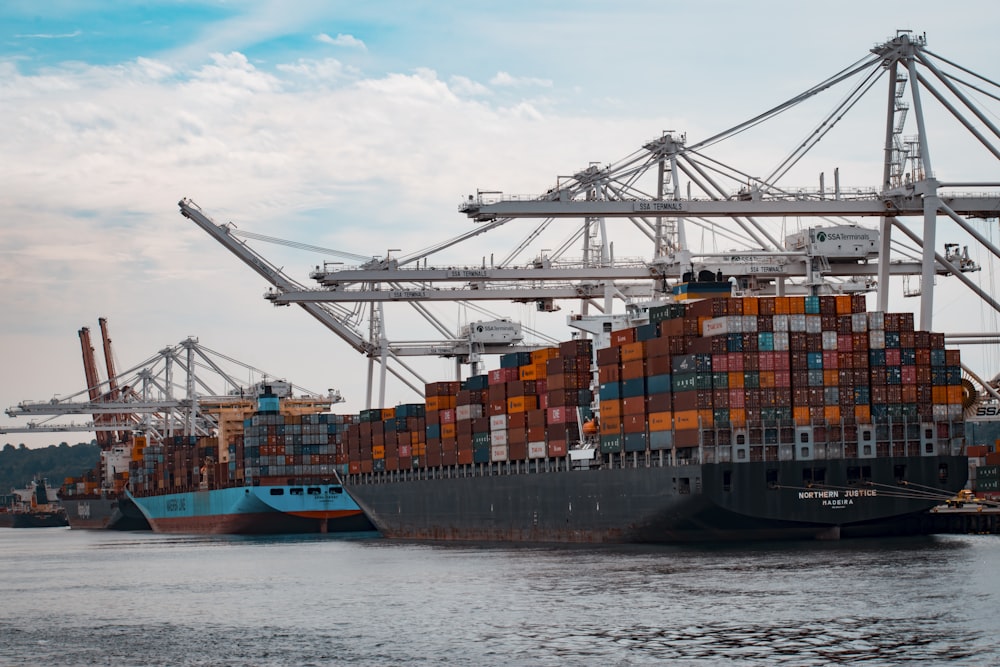Shipping And The World Economy
Image Source: Unsplash
Disruptions to global supply chains have put the global shipping market in the spotlight, highlighting its contribution to international trade and its significance as an important link in the chain of the world economy. One of its sectors is the dry bulk market that involves the transportation of commodities such as iron ore, grains, coal (coking and thermal), bauxite and alumina, and fertilizers. In 2021, dry bulk vessels carried more than 45% of the world’s seaborne trade.
Determinants of Freight Rates
Freight rates are driven by the balance between demand for seaborne trade and the supply of shipping services. The former correlates with world GDP cycles and is affected by prevailing conditions in the related commodity trades. Commodity markets affect the demand for shipping in both the short and long-term. Short-term fluctuations in shipping markets may be caused by the seasonality of some trades (e.g., in agricultural commodities) while long-term fluctuations are due to changes in the economies of the countries that import and export the corresponding commodities. Demand is also affected by the distance over which commodities are transported, known as the “average haul”.1 Finally, one must also consider random demand shocks caused by, among others, geopolitical events such as the recent conflict in Ukraine.
In contrast to demand, supply depends on the size of the global fleet, utilization rates, and—as witnessed during the COVID-19 pandemic—shocks caused by disruptions to the free movement of people and vessels. Shipping supply increases as new ships are delivered and decreases through the demolition of existing ones. Delivery of a newbuilding order requires a time-to-build and depends on prevailing market conditions as well as capacity in the shipbuilding industry. Equally, supply may be affected by changes in regulations. For instance, new environmental regulations that will come into force in 2024 require a part of the CO2 emissions from ships to be priced into the cost of freight. As emissions depend on the amount of fuel consumed, which in turn depends on the sailing speed, one way of reducing emissions is via slow steaming which will reduce the supply of ships.
Freight Rates and Commodity Prices
Commodity exposure to freight rates varies by vessel type and trade route but represents a noticeable percentage of the final value of a commodity. For example, freight accounts for up to 20% of the overall cost of iron ore that is exported from Brazil to China. To illustrate further, a recent study by the United Nations Conference on Trade and Development (UNCTAD) has shown that higher dry bulk freight rates, combined with higher grain prices, can contribute to a 1.2% increase in consumer food prices with price increases noticeably higher in middle-income economies whose food imports depend more on dry-bulk shipping.2
Closing thoughts
Shipping provides the most efficient way of transporting bulk commodities over long distances and is thus a very important link in the chain of the World economy. The recent introduction of the S&P GSCI Freight Indices has made these markets accessible with unique risk-return characteristics and low correlation to other financial assets and commodities.
1 Average haul is the typical distance over which commodities are transported by sea and is measured in tonne-miles, defined as the product of the quantity of shipped cargo times the transportation distance.
2 UNCTAD 2022 Review of Maritime Transport, p. xxii. Available on: https://unctad.org/system/files/official-document/rmt2022_en.pdf
More By This Author:
Equities Recover
Active Ability Versus Active Outperformance
Peak Passive And Market Efficiency
Disclaimer: See the full disclaimer for S&P Dow Jones Indices here.




